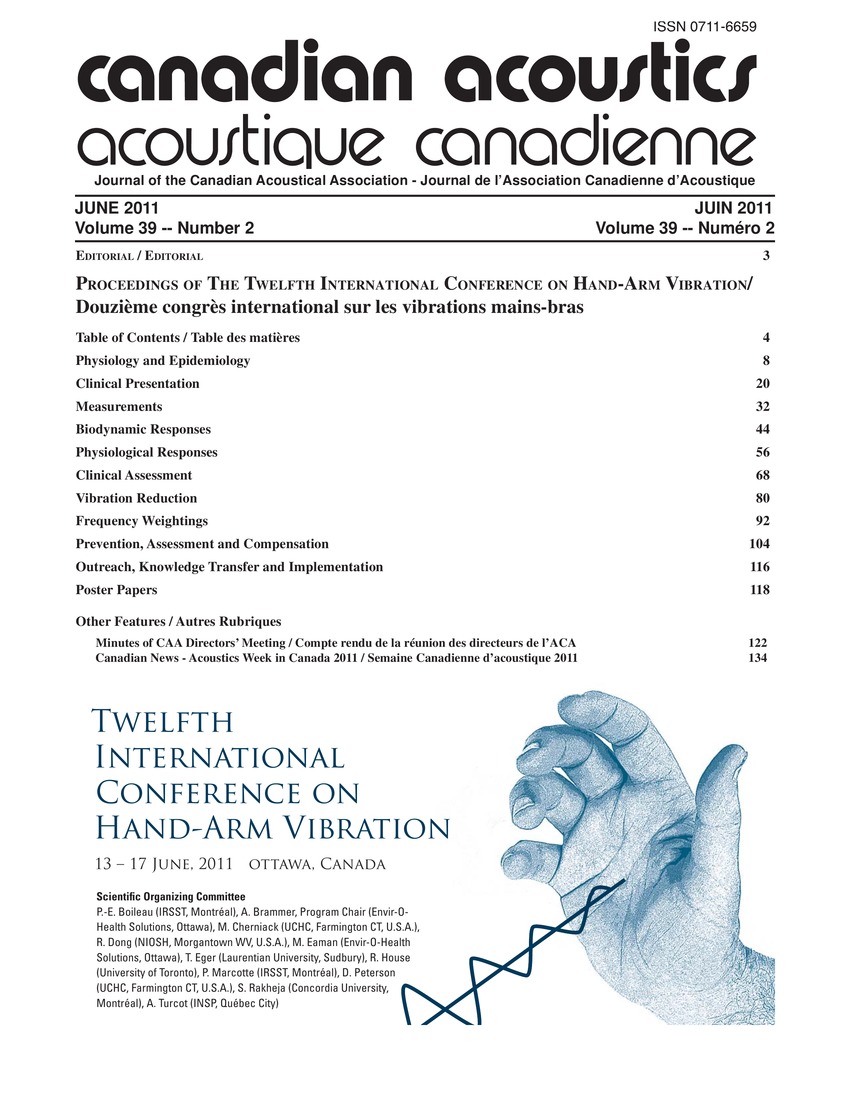Relative performance of frequency weighting w<inf>h</inf>and candidates for alternative frequency weightings when used to predict the occurrence of hand-arm vibration induced injuries
Keywords:
Accident prevention, Database systems, Information services, Occupational diseases, Acceleration spectrum, Bayesian information criterion, Frequency weightings, Hand-arm vibration, Hand-arm vibration syndrome, Health and safety laboratories, Historical database, Industrial machines, Relative performance, Weighted valuesAbstract
Different methods of determining cumulative vibration dose using the alternative frequency weightings are investigated and compared to the development sensorineural and vascular hand-arm vibration (HAV) injury. The comparison is based on a large historical database of measured HAV spectra from a wide range industrial machines, and a database of exposure history and injury from subjects attending the Health and Safety Laboratory's (HSL) referral center. Acceleration spectra from the HSL HAV database were analyzed to give weighted values for each of the alternative frequency weightings. HSL's Hand Arm Vibration Syndrome (HAVS) referral center collects data on diagnosis of HAVS and the history of symptoms. Increasing prevalence for any form of HAVS with percentile suggests a useful dose measure. Lower Bayesian Information Criterion (BIC) values suggest stronger dose measures, differences between BIC values of less than two suggest weak evidence for favoring one relationship above another, differences greater than 10 suggest very strong evidence.Additional Files
Published
How to Cite
Issue
Section
License
Author Licensing Addendum
This Licensing Addendum ("Addendum") is entered into between the undersigned Author(s) and Canadian Acoustics journal published by the Canadian Acoustical Association (hereinafter referred to as the "Publisher"). The Author(s) and the Publisher agree as follows:
-
Retained Rights: The Author(s) retain(s) the following rights:
- The right to reproduce, distribute, and publicly display the Work on the Author's personal website or the website of the Author's institution.
- The right to use the Work in the Author's teaching activities and presentations.
- The right to include the Work in a compilation for the Author's personal use, not for sale.
-
Grant of License: The Author(s) grant(s) to the Publisher a worldwide exclusive license to publish, reproduce, distribute, and display the Work in Canadian Acoustics and any other formats and media deemed appropriate by the Publisher.
-
Attribution: The Publisher agrees to include proper attribution to the Author(s) in all publications and reproductions of the Work.
-
No Conflict: This Addendum is intended to be in harmony with, and not in conflict with, the terms and conditions of the original agreement entered into between the Author(s) and the Publisher.
-
Copyright Clause: Copyright on articles is held by the Author(s). The corresponding Author has the right to grant on behalf of all Authors and does grant on behalf of all Authors, a worldwide exclusive license to the Publisher and its licensees in perpetuity, in all forms, formats, and media (whether known now or created in the future), including but not limited to the rights to publish, reproduce, distribute, display, store, translate, create adaptations, reprints, include within collections, and create summaries, extracts, and/or abstracts of the Contribution.


